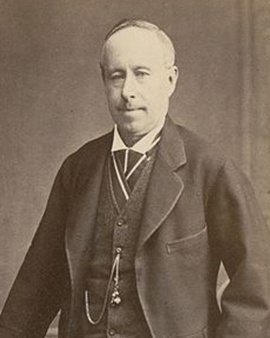The works of George French Angas give an impressive insight into Maori culture in the 19th century. Something that only a few artists of his epoch had succeeded in doing. In his drawings and paintings he managed to capture snapshots of the New Zealand natives. In his numerous paintings the first influences of western culture on the Maori can be seen. Early on Angas was interested in natural history and drawing in general. For a short time he took over a position in his father's office until art fascinated him again. So he had lessons with Benjamin Waterhouse Hawkins, natural scientist and illustrator.
An important milestone in his artistic career was his trip to South Australia. He settled in his father's country estate in Australia, from where he made several expeditions. Numerous well-known people crossed his path and partly shaped his attitude. For example, the governor of South Australia, George Grey, was one of them. With him, he undertook a total of two expeditions, which led him deeper into the Australian culture. In 1844, he finally decided to travel to New Zealand. There he made the acquaintance of Te Rauparah, an important leader of one of the great Maori tribes. Thus he came more and more into contact with the Maori people, which is reflected in numerous drawings and portraits. In his works the beginning influence of the European settlers on the Maori culture can be seen. He also recorded his journey from Waikato to Lake Taupo on paper, partly in watercolours. Some of them served Angas as a basis for later lithographs.
Although his stay in New Zealand was short, important drawings and portraits were produced during this time. George French Angas is credited with a large number of portraits of famous Maori. He wanted to capture the uncivilized life that was just beginning to move towards civilization. Through his interest in natural history and ethnology he managed to draw a detailed record of their lifestyle. But his drawing style was also based on something sentimental, partly romantic. Thus Angas united the contrasts of old-established customs and European ideas - a testimony to the European settlement of New Zealand.
×





.jpg)
.jpg)
.jpg)
.jpg)
 - (MeisterDrucke-184780).jpg)
 - (MeisterDrucke-184780).jpg)
.jpg)
.jpg)
.jpg)
.jpg)
.jpg)
.jpg)
.jpg)
.jpg)
 - (MeisterDrucke-170393).jpg)
 - (MeisterDrucke-170393).jpg)
.jpg)
.jpg)
.jpg)
.jpg)
.jpg)
.jpg)
.jpg)
.jpg)
.jpg)
.jpg)
 - (MeisterDrucke-171303).jpg)
 - (MeisterDrucke-171303).jpg)
.jpg)
.jpg)
.jpg)
.jpg)
.jpg)
.jpg)
.jpg)
.jpg)
.jpg)
.jpg)
.jpg)
.jpg)
.jpg)
.jpg)
.jpg)
.jpg)
.jpg)
.jpg)
.jpg)
.jpg)
 - (MeisterDrucke-147953).jpg)
 - (MeisterDrucke-147953).jpg)
.jpg)
.jpg)
.jpg)
.jpg)
.jpg)
.jpg)
.jpg)
.jpg)
.jpg)
.jpg)
.jpg)
.jpg)
.jpg)
.jpg)
.jpg)
.jpg)
_dancing_girls_-_(MeisterDrucke-1512184).jpg)
_dancing_girls_-_(MeisterDrucke-1512184).jpg)
.jpg)
.jpg)
.jpg)
.jpg)
.jpg)
.jpg)
.jpg)
.jpg)
.jpg)
.jpg)
.jpg)
.jpg)
.jpg)
.jpg)
.jpg)
.jpg)
.jpg)
.jpg)
.jpg)
.jpg)
.jpg)
.jpg)
.jpg)
.jpg)
.jpg)
.jpg)
.jpg)
.jpg)
.jpg)
.jpg)
.jpg)
.jpg)
.jpg)
.jpg)
.jpg)
.jpg)
.jpg)
.jpg)
.jpg)
.jpg)
.jpg)
.jpg)
.jpg)
.jpg)
.jpg)
.jpg)
.jpg)
.jpg)
.jpg)
.jpg)
.jpg)
.jpg)
.jpg)
.jpg)
.jpg)
.jpg)
.jpg)
.jpg)
.jpg)
.jpg)
.jpg)
.jpg)
.jpg)
.jpg)
.jpg)
.jpg)
.jpg)
.jpg)
.jpg)
.jpg)
.jpg)
.jpg)
.jpg)
.jpg)
.jpg)
.jpg)
.jpg)
.jpg)
.jpg)
.jpg)
.jpg)
.jpg)
.jpg)
.jpg)
.jpg)
.jpg)
.jpg)
.jpg)
_-_(MeisterDrucke-1667233).jpg)
_-_(MeisterDrucke-1667233).jpg)






